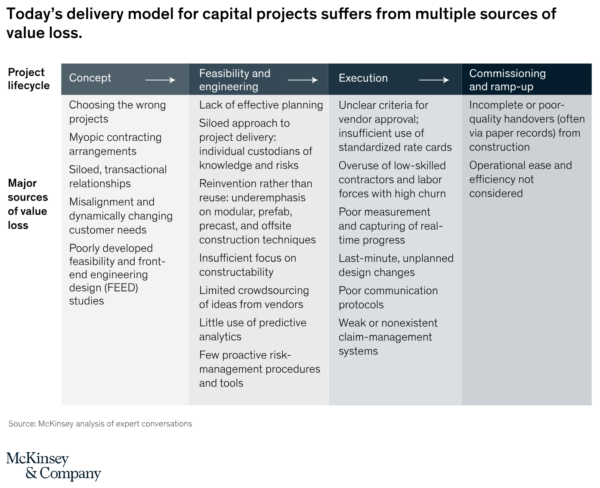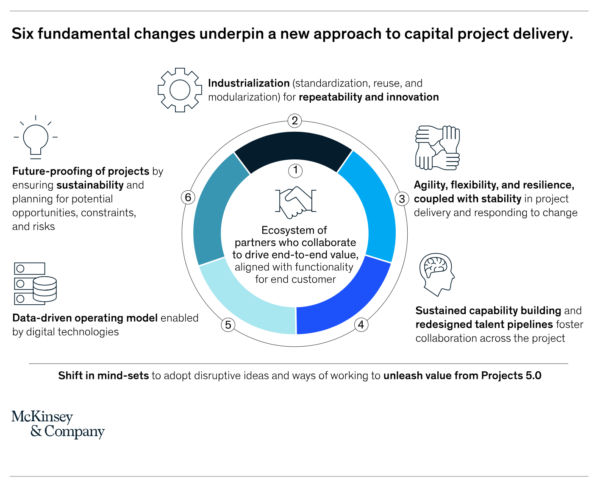Projects 5.0: A cleansheet approach to project delivery
The time is ripe for radical change in delivering large capital projects: starting with a clean sheet and rebuilding the project-delivery model from the ground up. Over the past year, we have worked with industry leaders and experts from around the world to reimagine how such a model would operate. We set ourselves the challenge of creating a model that could achieve five key objectives:
- Reduce actual project cost and time by 30 to 50 percent
- Produce safe and predictable outcomes
- Provide a platform for innovation and continuous improvement
- Maximize total project value for all stakeholders, including the end user
- Enable projects to meet sustainability goals

Origen: Why the time is right to reinvent capital-project delivery | McKinsey

- An ecosystem of partners that collaborates across multiple projects to maximize end-to-end value and deliver optimal functionality for the end user.
- Industrialization and innovation, with the adoption of standard processes for repeated tasks. Extensive use of standardization and modularization reduces recurring design costs and enables offsite construction. Investment in innovation drives continual experimentation, with successful ideas rapidly deployed as new or updated standards.
- Agility, flexibility, and resilience, combined with a stable backbone of disciplined processes, progress monitoring, and management. Cross-functional teams work together to develop and deliver project elements, solve problems, and respond to change. Resources are rapidly reallocated within and between projects according to need.
- Sustained capability building with a redesigned “people supply chain” that ensures companies acquire, develop, and retain the labor and talent they need for consistent, high-productivity work across all project phases.
- A data-driven operating model resting on a robust digital architecture, shared by all stakeholders in the ecosystem. The project-technology platform should enable real-time visibility of progress, facilitate collaborative design and problem solving, and enable data-and insight-driven decision-making.
- Future-proofing of projects, with the use of metrics and incentives that consider full lifecycle impacts, future opportunities, and risks, while promoting innovation for long-term commercial and environmental sustainability.
